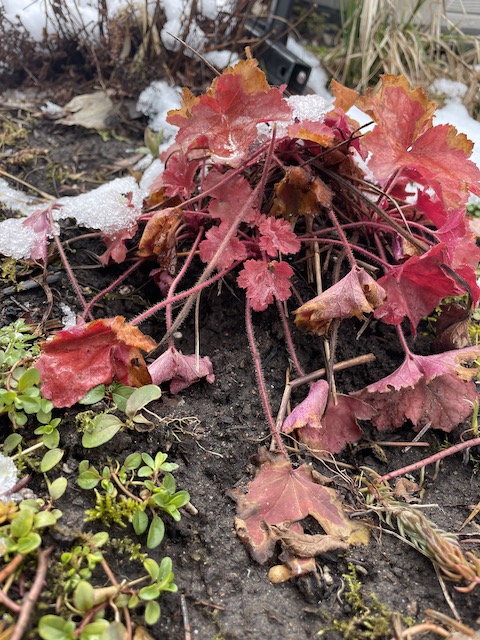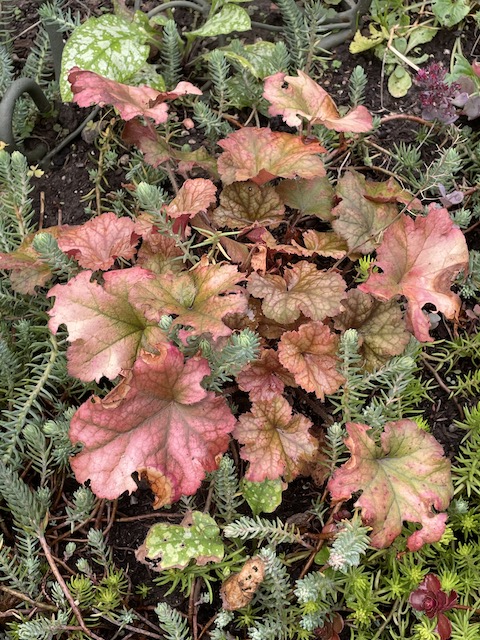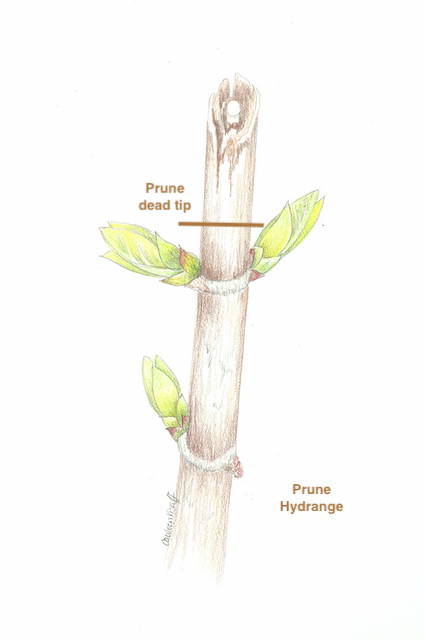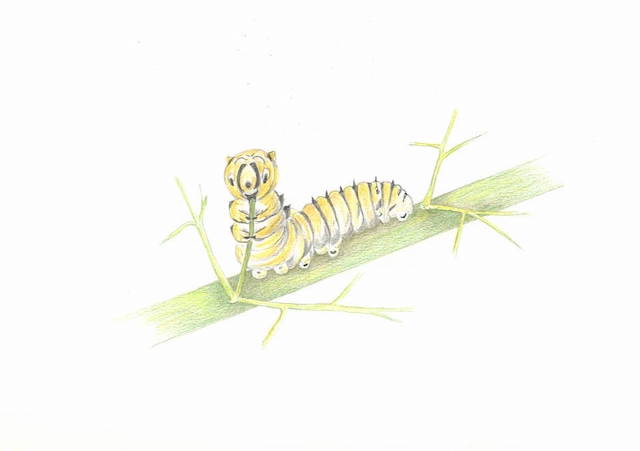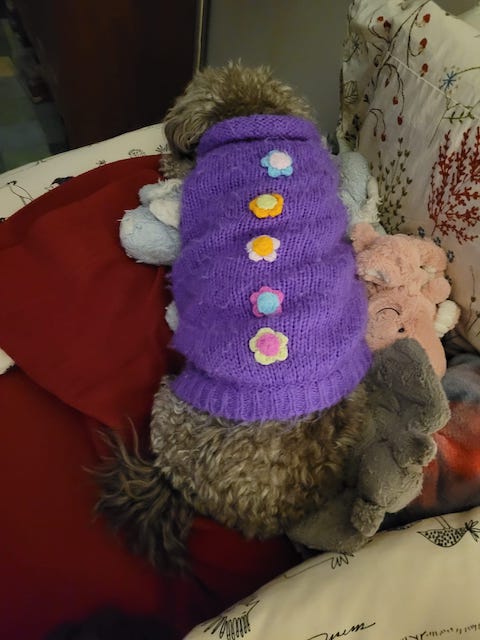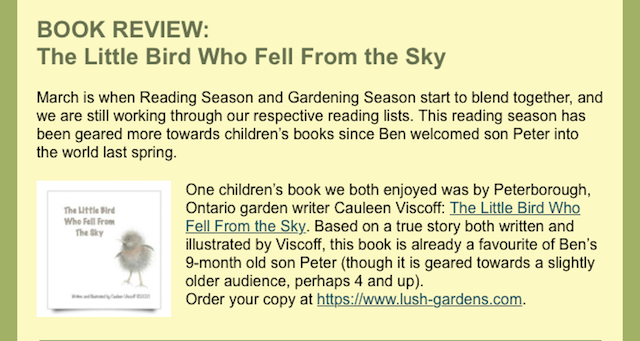| Back to Back Issues Page |
 |
|
Garden Bliss & Blunder, Issue #034 April 08, 2024 |
Spring is Early
"A garden is not a place: it is a passage, a passion. We don’t know where we’re going; to pass through is enough; to pass through is to remain." Octavio Paz Oops... ?
Turkey Vultures
Adult turkey vultures are very large birds with long, broad wings, mostly dark brown feathers and sharply hooked white bills. They are named for their distinct red, bald heads, which look similar to that of a North American wild turkey. Their bare head lets the birds stay germ-free when they are eating a carcass; otherwise their feathers would get dirty. While they often feed near humans, turkey vultures prefer to roost and nest far from people in high secluded spots. If a turkey vulture is threatened, it will regurgitate semi-digested meat to lighten its body for a quick takeoff and escape. Let Your Garden Sleep a bit longerWhen you cannot wait to clean up your garden because new things are greening up, cut dead stems at random lengths but leave some of them still standing … new ones will soon grow up to cover the dead stems where wee bugs can still hide out in the summer.
“I don’t get this….”this tidying up" mentality ... plants by nature are not tidy… gardens can be neat without being sterile, losing the bounty of billowing blooms... gardening is for everyone to get a kick out of. .. it is between you and your patch of soil, you and nature”. Alan Titchmarsh
Photo credit: sustainable-suburbanites Cutting Back Grasses & PerennialsYou can begin to cut back grasses because once they start to send up green shoots, you want the old dried stems cut ... otherwise, if you wait, you will cut off the new tips. Cut your grasses back in the shape of a mound... they will look fuller with a softer profile.
BUT be sure to leave some of the hollow stems for sleeping insects.
Sometimes all you see is a hole like this.
Cutting at different lengths will leave sleeping bugs alone ... take the dead stems and place them inside an old pot to make a wee insect house. Water for Birds & BeesClean the bird bath and leave a shallow dish with small smooth stones for bees to land on… chippies appreciate water too. HUMMING BIRDS: White sugar and water only please... and be sure to keep the feeder clean. .. bacteria can grow quickly and can affect the hummingbird's tongue so it cannot drink... and dies.
Lights Out...
Make your environment safer for migratory birds by decreasing light pollution. Pledge to turn off all unnecessary lights between the hours of 11 pm - 6am, during peak bird migration times: March-May, and August-October. Tracy Aviary - Thanks to Peterborough Field Naturalists for sharing this recently! However, many of us leave our porch lights on for safety - so consider changing the bulb to yellow as shown in the chart. Weeds... already?Please don’t till your garden… it disturbs the weed seeds but more importantly, it disturbs soil health and the mycorrhizae (fungi) the roots need to build strength. Besides, weed seedlings have the uncanny ability to grow anywhere, any time and disturbing the soil says - “hey weeds. time to grow…”… Sometimes I have been known to pull what I think is a weed and then find it is a beloved perennial seedling… ugh… Learn what they look like as seedlings because it is hard to tell a weed from a precious perennial…
- a beautiful "thug" and If you recognize it when it is a seedling, it is easier to get rid of it then as It spreads underground.
- and the innocent looking seedling on the left could easily be mistaken for so many lovely perennials... the rosette on the right is what you would see when it matures ... a tap root makes it harder to pull when mature. DO YOUR WEED RESEARCH: there are many weed seedling photos on line that can help. Heuchera Help...
Don't be distressed if your Heuchera looks like this above....
...instead of this.... Check them as soon as the soil warms up; some of them will have lifted up, exposing the stem. Gently dig them out, shake off the soil and split them IF there are more stems and a natural break between the stems. Then either pull them apart gently or cut them but be sure there are roots on both stems otherwise only one will grow. Take off dead leaves and replant so only the crown is above the soil. (Sean James has a video (Sean James Heuchera Division Video) Be Careful: if you just search Sean James you will go down a rabbit hole of film stars. Who knew?)
Always looks worse this time of year. Just wait to fix it. Pruning...OAK TREES: NOT NOW OAK WILT is HERE in ONTARIO.... PLEASE READ: What you can do DON'T PRUNE FROM APRIL 1 -NOVEMBER 30 Don't move firewood Check oak trees for signs of oak wilt Prevent the spread Oak wilt can kill an oak tree in a single season. If you see signs and symptoms of this disease, contact the Canadian Food Inspection Agency immediately (LINK BELOW PHOTO) Learn more at inspection.canada.ca/oak-wilt
Hydrangea
HYDRANGEA TREES: First - look at the amount of growth from last season. Your new blooms will be on new growth …REMEMBER, the new growth will begin where the old growth stops and continue out from there…making your bush or tree huge with heavy blooms that can bend and break the stems.. 1. Cut back the old blooms to just above a tiny bud on the sides of the branch. 2. cut dried blooms 3. dead stems or branches 4. crossing and rubbing 5. small, weak stems that can’t support heavy blooms 6. very long branches
TREE PEONIES: Tree Peonies can seem intimidating to prune … they aren’t - Look for reddish buds like those in the sketch. Follow up the stem to the last bud nearest the top of the stem and cut just above that
ROSES: Best time is when the Forsythia blooms - (if there is no Forsythia nearby, nighttime temps need to be 10C or 50F consistently and can often be early to mid April) Prune roses how they grow - and they are not all the same They don’t all want to be cut off at ground level…. no matter what anyone says, because if you cut a climber to the ground every year, it will take a season or two to re-grow tall and bloom…. See the difference between these roses and see how they need different pruning.
Bush roses and climbers and check out the link below on rose pruning.
By the way, our neighbourhood bunny doesn't know it is too soon to prune my roses. .. arrggghhh
Grass to Garden? Why not?There are some things to consider if you are going to get rid of some of your lawn for a garden. Making a more natural, lawn-to-garden conversion can feel daunting or overwhelming... where to start and how? Choose a limited plant palate based on your garden size. The smaller the space, the smaller the species list so it is not visuallv overwhelming. 1. Choose a single-hued green base layer, (or ground-cover, to tie spaces together like your lawn did. 2. Try to have just a couple of plants in bloom at one time - the smaller the space the more important this is. 3. No perennials or annual taller than 3-4 feet. Taller plants in the middle or back of beds. Nothing tall within 4' of the sidewalk. 4. Plan for paths, benches, sculpture, bird bath, arbors, a sign, etc. 5. Don't use aggressive species. Research your plants carefully to match your site Plant in repeating masses and drifts. (Remember, exceptional claims require exceptional evidence). 6. Repetition is pleasing to the eve and helps take your eye through the garden. Masses also create a bigger beacon while reducing energy efforts for pollinators. Here is what I did...
CATERPILLARS Caterpillars are a food source for birds, raccoons, opossums, foxes etc Plants that have holes in the leaves means they are part of the food chain, supporting an abundance of wildlife. Native wildlife feed on native plants. Non-native plants without holes in the leaves are not supporting our wildlife. Please consider planting native where you can, as you can.
my sketch Late Snow....yuk
Lucy was not thrilled to have to do her business outside today.
..and then hurried back to bed; still wearing her Easter sweater.
Spring Celebrations...SOLAR ECLIPSEDo your homework and research how to view (or not) this once in a lifetime event. It is not something to be viewed without special glasses... and make sure the code on them is accepted by the folks who know. There is a lot on line...choose the site run by scientists. And, until next time...
SORRY.... SOLD OUT !!!!
Back Issues for Garden Bliss & Blunder
|
| Back to Back Issues Page |















